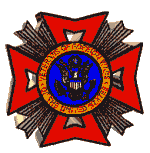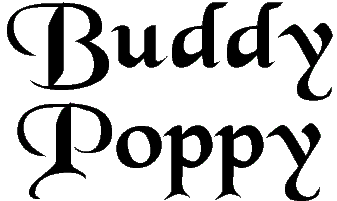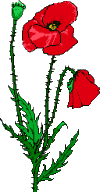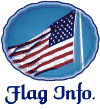

 From its inception, the Buddy Poppy Program has helped the VFW live up
to its motto, "to honor the dead by helping the living." The Buddy Poppy - small
red flower symbolic of the blood shed in World War I by millions of Allied soldiers in
defense of freedom - was originally sold to provide relief for the people of
war-devastated France. Later, its sale directly benefited thousands of disabled and
down-and-out American veterans.
From its inception, the Buddy Poppy Program has helped the VFW live up
to its motto, "to honor the dead by helping the living." The Buddy Poppy - small
red flower symbolic of the blood shed in World War I by millions of Allied soldiers in
defense of freedom - was originally sold to provide relief for the people of
war-devastated France. Later, its sale directly benefited thousands of disabled and
down-and-out American veterans.
The poppy program actually got its start on the other side of the Atlantic Ocean. Shortly after World War I, Madame E. Guerin, founder of the American and French Children's League, became concerned that the free world was "forgetting too soon those sleeping in Flanders Fields." Inspired by Colonel John McCrae's poem, "In Flanders Field," which spoke of poppies growing in an Allied graveyard "between the crosses, row on row," Guerin decided on the poppy as the most appropriate memorial flower. She began attending the conventions of any serviceman's organization that would allow her to speak. Her request was always the same - to enact the following resolution: "Be it resolved that every member, if possible, and his or her family shall wear a silk red poppy."
The poppy program was quickly embraced by the people of France, and also secured the sponsorship of the Prince of Wales, the Governors General of Canada, Australia, and New Zealand, and the President of Cuba. In each of these countries, veteran's organizations and their auxiliaries agreed to sell memorial poppies for the benefit of the children of France.
In April 1919, the "Poppy Lady," as Madame Guerin was now known, arrived in the United States. She came to speak in support of the "Victory Loan" - financial assistance to help France's homeless and jobless get back on their feet. While stateside, she asked the newly formed American Legion to sponsor the poppy program in the United States. At their second national convention in Cleveland in September 1920, the American Legion passed a resolution making the poppy their official flower. At the next year's convention, however, the delegates repudiated the poppy and instead adopted the daisy as the organization's official flower. Subsequently, Madame Guerin reported that her "deception was great on the 23rd of January [1922] to hear that the American Legion Auxiliary had taken the Idea to sponsor FOR THEMSELVES the Poppy Day of the U.S."
When the Poppy Lady turned to the VFW for help, the organization readily agreed to take over from the American Legion. In May 1922, the VFW conducted the first nationwide distribution of poppies in the United States. Then, at its National Encampment in Seattle in August 1922, the organization adopted the poppy as the official memorial flower of the VFW.
Following the success of the VFW's first poppy sale, the American Legion had second thoughts about its withdrawal from the program.
A disgruntled American Legion was not the only problem to plague the VFW's poppy program in the early years. The American and French Children's League (sometimes referred to as the Franco-American Children's League) had been dissolved shortly before the VFW's 1922 poppy sale. Much of the poppy supply went with it. Consequently, the VFW had great difficulty obtaining enough poppies for the 1923 sale.
From the frustrations of the 1923 sales year evolved a plan to pay disabled and needy American veterans to make the poppies. This plan was presented to the 1923 National Encampment for approval. Immediately following the plan's adoption, a VFW poppy factory was set up in Pittsburgh, Pennsylvania. All veterans who would be manufacturing poppies for the 1924 sale were sent to a training workshop by the U.S. Veterans Bureau regional manager in Pittsburgh.
It was from these early disabled poppy makers that the name which would be the flower's trademark came. The name just "grew" out of the poppy makers' remembrances of their buddies who never came back from war. Undoubtedly, because it expressed so simply the deepest significance of the Poppy Plan, the name stuck. All over the country, the little red flower became known as the "Buddy Poppy."
In February 1924, the VFW registered the name "Buddy Poppy" with the U.S. Patent Office. On May 20, 1924, a certificate was issued granting the VFW, under the classification of artificial flowers, all trademark rights to the name of "Buddy." No other organization, firm, or individual can use the name "Buddy Poppy." The VFW has made this trademark a guarantee that all poppies bearing that name and the VFW label are the work of bona fide disabled and needy veterans.
After the 1924 sale, some of the larger state departments of the VFW suggested that it might improve local sales if the poppies used were made by hospitalized veterans from their own area. The delegates at the 1924 National Encampment agreed. They ruled that poppies would now be made throughout the U.S. by disabled veterans in government hospitals and by needy veterans in workshops supervised by the VFW. Currently the little red flowers of silk-like fabric are assembled in eleven different locations. The VA Facilities in which they are made are located in: Leavenworth and Topeka, Kansas; Biloxi, Mississippi; Temple, Texas; Martinsburg, West Virginia; Hampton, Virginia; Milwaukee, Wisconsin; Dayton, Ohio; and White City and Grand Rapids, Michigan.
From the start of the VFW's poppy program, the U.S. Veterans Bureau, the Administrator of Veterans Affairs, and other federal agencies have supported the Buddy Poppy. And beginning with Warren G. Harding, U.S. presidents have also been staunch supporters of the program. Each year, a Poppy Girl or Poppy Boy selected from the National Home's residents starts the annual campaign by presenting the first poppy to the president of the United States.
Today, there are strict rules governing how profits from Buddy Poppy sales are to be used at different levels within the organization. The National organization assesses a tax of three and one-half cents on every poppy sold to a state department. This tax is added to the cost of manufacturing and distributing the poppy. Tax revenues are allotted as follows: one and one-half cents to the service fund of the department that purchased the poppy, one cent to the VFW National Home, and one cent to the Veterans Service fund of the National Headquarters.
At the department level, an additional tax is normally added to the cost of the poppies it sells to the posts in its jurisdiction. This profit is used to fund department service work or other programs for the relief or well-being of VFW members.
Posts receive their profits from direct sale of the poppies to the public. National by-laws require that the profits from these sales be placed in the post's Relief Fund to be used only for the following purposes:
- For the aid, assistance, relief, and comfort of needy or disabled veterans or members of the Armed Forces and their dependents, and the widows and orphans of deceased veterans.
- For the maintenance and expansion of the VFW National Home and other facilities devoted exclusively to the benefit and welfare of the dependents, widows, and orphans of disabled, needy, or deceased veterans or members of the Armed Forces.
- For necessary expenses in providing entertainment, care, and assistance to hospitalized veterans or members of the Armed Forces.
- For veterans' rehabilitation, welfare, and service work.
- To perpetuate the memory of deceased veterans and members of the Armed Forces, and to comfort survivors.
 With help from the VFW, the "Little Red Flower" continues to
benefit the needy just as the Poppy Lady believed it was capable of so many years ago. In
1989, for example, 17,894,684 poppies were sold for an average donation of 55 cents. To
date, the VFW has sold over three quarters of a billion Buddy Poppies. As long as
Americans continue to spill their blood in defense of freedom, sales of these blood-red
poppies will undoubtedly continue strong.
With help from the VFW, the "Little Red Flower" continues to
benefit the needy just as the Poppy Lady believed it was capable of so many years ago. In
1989, for example, 17,894,684 poppies were sold for an average donation of 55 cents. To
date, the VFW has sold over three quarters of a billion Buddy Poppies. As long as
Americans continue to spill their blood in defense of freedom, sales of these blood-red
poppies will undoubtedly continue strong.









 E-Mail
E-Mail